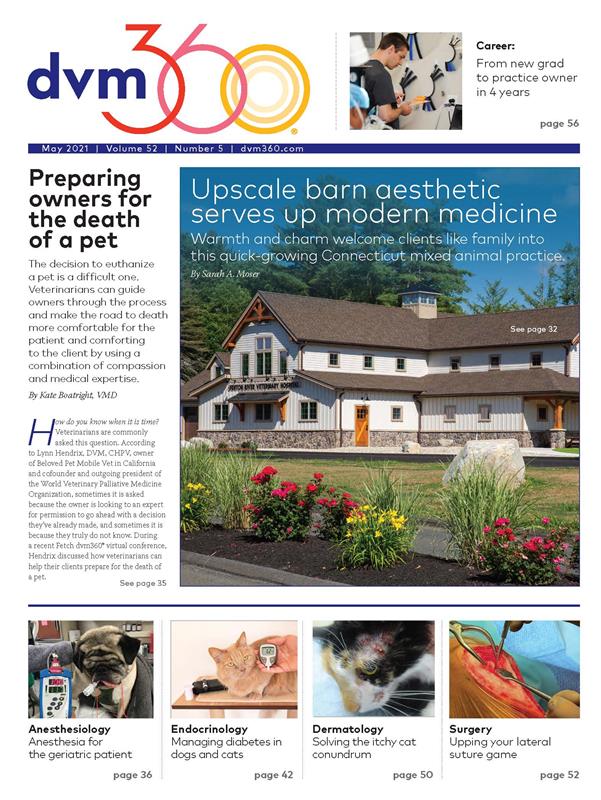Legal and business trends affecting the veterinary associate shortage
From a glut to a dire shortage, here’s a look at the economic realities of hiring associate veterinarians today.
In his seminal treatise on economics published in 1776, Adam Smith introduced the world to the “invisible hand” of supply and demand economics. Smith’s “An Inquiry into the Nature and Causes of the Wealth of Nations”—best known simply as “The Wealth of Nations”—described economic realities that have transcended both market and command economies, capitalist and socialist economic systems, as well as periods of technological stagnation and extraordinary innovation. Smith’s invisible hand is manipulating the players and the chess pieces in the veterinary service industry as never before, and in ways that only a truly prescient observer could have anticipated a decade ago.
Practitioner demand in the pet-aware world
The impact of the coronavirus pandemic on the small animal veterinary segment of the American economy has been dramatic and entirely counterintuitive. At a time when one might expect a severe reduction in disposable income, virtually every metric (as well as every anecdotal account our consulting practice has heard) indicates a dramatic upswing in demand for veterinary services.
Stated more succinctly, it seems that folks stuck at home are laser focused on their pets. The result is that veterinary practitioners have barely been able to keep up with the demand for pet care services. Partly as a result of COVID-19, and partly due to other market factors such as the increasingly deep footprint of corporate practice consolidators, the market for graduate veterinarians has tightened. A lot.
In some regions of the United States it is literally impossible to successfully recruit associate veterinarians. Highly desirable “lifestyle-friendly” cities such as Austin and Denver are having somewhat less difficulty recruiting associate veterinarians, but even those areas are struggling.
Who could have predicted all this just a few years ago when all the trade publications were bemoaning a “glut of DVMs,” and “shockingly low starting salaries” for new entrants into the pet care field? Confounding many pundits, the supply and demand balance has shifted dramatically. And as an attorney who handles veterinary matters exclusively, I see fascinating legal and business trends unfolding before my eyes.
Workplace quality and efficiency are increasing
Smith’s invisible hand of market economics is forcing all the players in small animal medicine to step up their game. Both newly minted and well-seasoned veterinarians are recognizing some indisputable realities attributable to the doctor shortage:
- All things being equal (salary, benefits, PTO, etc), it has become extremely difficult to recruit an associate unless a clinic has the latest diagnostic and therapeutic equipment. Young doctors expect it because anything less negatively impacts their ability to provide top-notch care. More experienced doctors learn in CE seminars that they must use new technology to meet and exceed client expectations.
- Consolidators are savvy competitors and know precisely what they must offer employee veterinarians if they want to fill their professional positions. They have robust human resources departments and recruit with precision tactics. Privately owned practices must follow suit in providing flexible scheduling, mentorship, and sensitivity toward the family demands of associate candidates, including such things as paternity leave.
Associates are becoming legally sophisticated
New veterinary graduates entering the workplace are more likely today to have at least some knowledge of employment contract law. This insight sometimes comes from business classwork in veterinary school, which is becoming more commonplace, and sometimes because associates are seeking legal guidance as a result of having heard new-job “horror stories” about onerous noncompetition contractual terms and some clinics’ Pro-Sal bonus calculation shenanigans.
Consequently, the associate-o-sphere is no longer occupied exclusively by negotiating ingenues. Associate candidates of all ages, and relief veterinarians for that matter, now have a very good idea of their value to a veterinary service enterprise. And they are no longer afraid to pit 1 desperate employer—corporate or otherwise—against another in search of the best contract terms.
Practices are forced to face economic realities
Smith wouldn’t be surprised to see veterinary hospitals becoming streamlined and time-efficient in an effort to cope with the prevailing low supply of graduate DVMs. He would nod in understanding if he saw, for example, a dramatic increase in the use of licensed veterinary technicians. And he would anticipate a trend toward salary increases for those paraprofessionals as their roles become more critical in the operation of increasingly streamlined veterinary hospitals.
And no economist would deny that “a high tide lifts all boats.” Employable veterinarians are now in a position to look beyond compensation and a 401(k) match in picking what clinic to work for. They are increasingly willing to shadow at a potential employer’s facility to see if the support staff is competent, qualified, and adequately compensated. Veterinarians don’t like working in an environment where paraprofessionals and front-office staff feel abused and economically neglected. Employed doctors want to see that their coworkers are appreciated and motivated, leading to a maximally professional working environment. The invisible hand of supply and demand is locking the revolving door of staff resignations.
Negotiation gloves are off
Finally, associate candidates are becoming remarkably savvy with the legalities of contract negotiation and the statutory protections available to them. Lately, we are hearing about state noncompetition limitations and nonsolicitation enforcement restrictions from our associate clients before we even have an opportunity to read them on LexisNexis. Plus the internet allows DVM job hunters to know all about what employers are offering, how open they are to negotiating problematic contract terms, and even what’s out there 401(k) match-wise.
In the case of the law of supply and demand, one might say what doesn’t kill the associate job applicant makes her stronger. Or at least more legally sophisticated and prepared to deal.
Christopher J. Allen, DVM, JD, is president of Associates in Veterinary Law PC, which provides legal and consulting services exclusively to veterinarians. He can be reached at info@veterinarylaw.com. Allen serves on the dvm360® Editorial Advisory Board.

